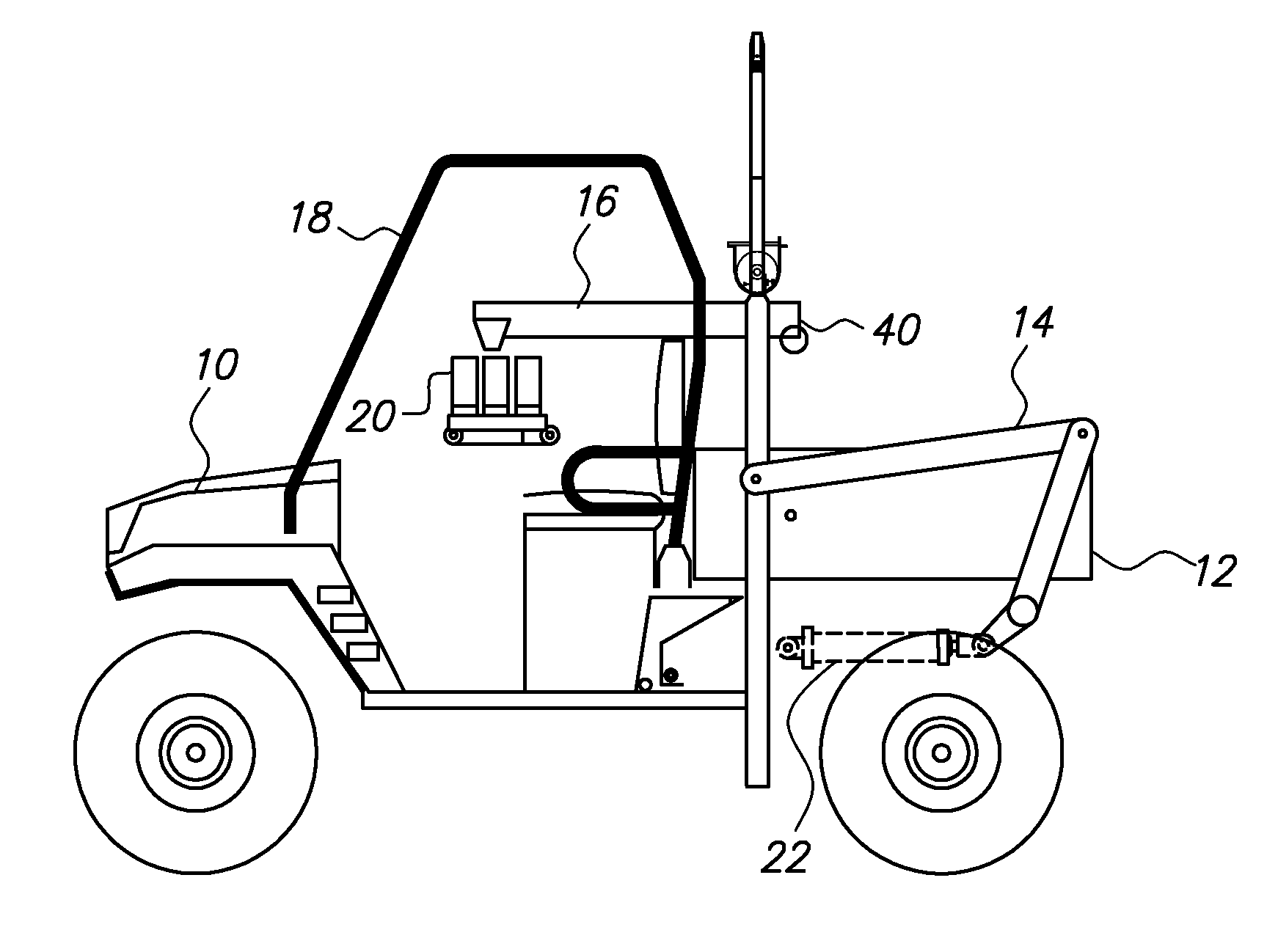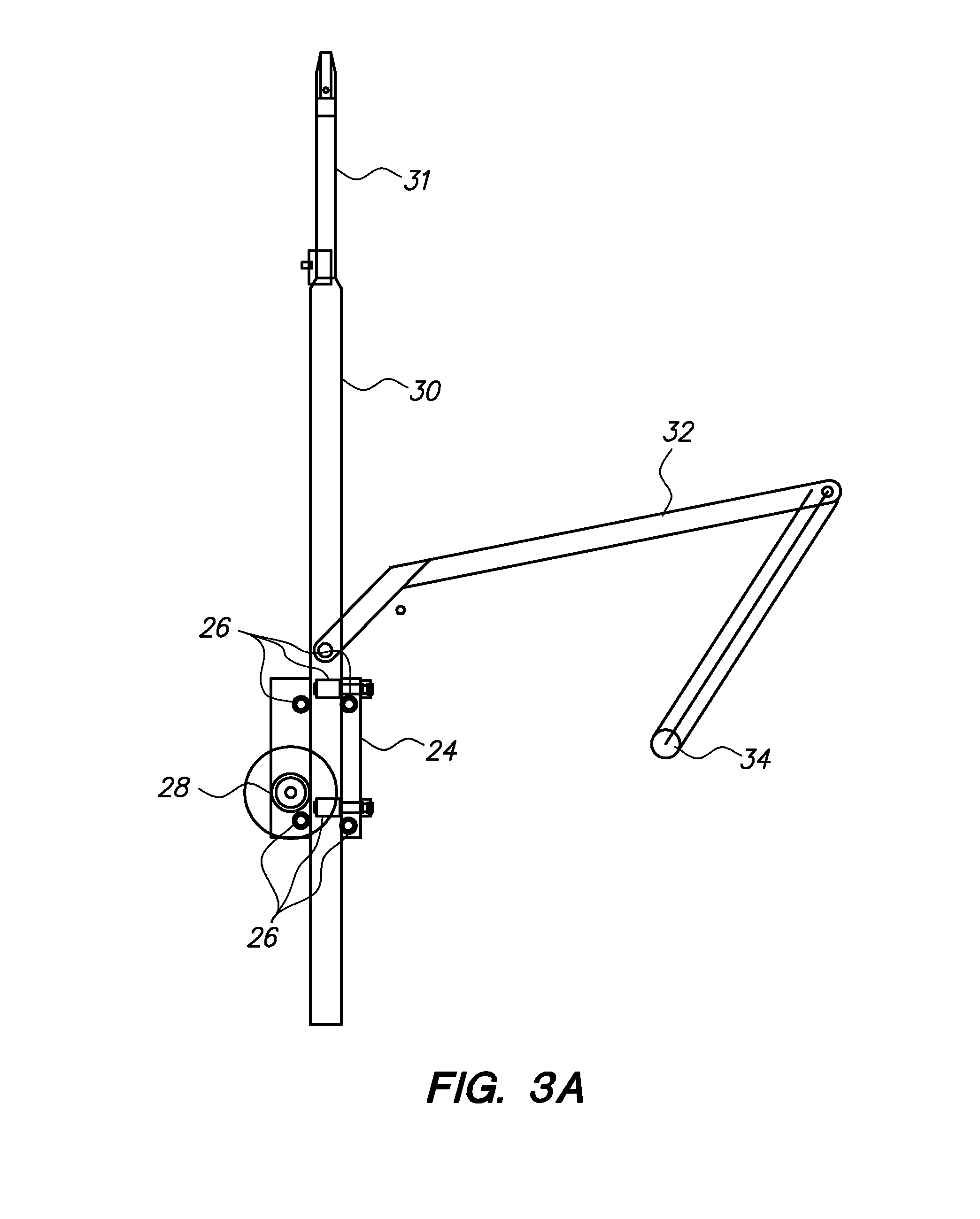Vehicle-mounted soil sampling apparatus
a soil sampling and vehicle-mounted technology, applied in the direction of instruments, wellbore/well accessories, agriculture, etc., can solve the problems of inability to know how much fertilizer or other additives to place at a soil plot, manual operation to perform soil sampling is necessary, tiresome and time-consuming, etc., to achieve convenient operation, easy maintenance, and low cost
- Summary
- Abstract
- Description
- Claims
- Application Information
AI Technical Summary
Benefits of technology
Problems solved by technology
Method used
Image
Examples
Embodiment Construction
[0031]With reference to FIGS. 1 and 2, a general description of the preferred embodiment of the present invention may be described. Vehicle 10 may be a truck or any of the sorts of utility vehicles that are commonly used in farming applications. Preferably, vehicle 10 has a bed 12. Sampling assembly 14 and collection assembly 16, the individual components of which will be described in more detail below, are mounted at bed 12, and a portion of collection assembly 16 extends into cab 18 of vehicle 10. Bagging assembly 20 is preferably mounted in cab 18 in order to provide convenient access to collected soil samples for the driver of vehicle 10. Sampling assembly 14 is powered by hydraulic cylinders 22, of which there are two in the preferred embodiment.
[0032]Turning now to FIGS. 3A and 3B, the probe components of sampling assembly 14 may be described in greater detail. It may be noted that the components shown in FIGS. 3A and 3B are repeated on each side of bed 12 of vehicle 10 in the...
PUM
| Property | Measurement | Unit |
|---|---|---|
| diameter | aaaaa | aaaaa |
| area | aaaaa | aaaaa |
| speed | aaaaa | aaaaa |
Abstract
Description
Claims
Application Information
 Login to View More
Login to View More - R&D
- Intellectual Property
- Life Sciences
- Materials
- Tech Scout
- Unparalleled Data Quality
- Higher Quality Content
- 60% Fewer Hallucinations
Browse by: Latest US Patents, China's latest patents, Technical Efficacy Thesaurus, Application Domain, Technology Topic, Popular Technical Reports.
© 2025 PatSnap. All rights reserved.Legal|Privacy policy|Modern Slavery Act Transparency Statement|Sitemap|About US| Contact US: help@patsnap.com



